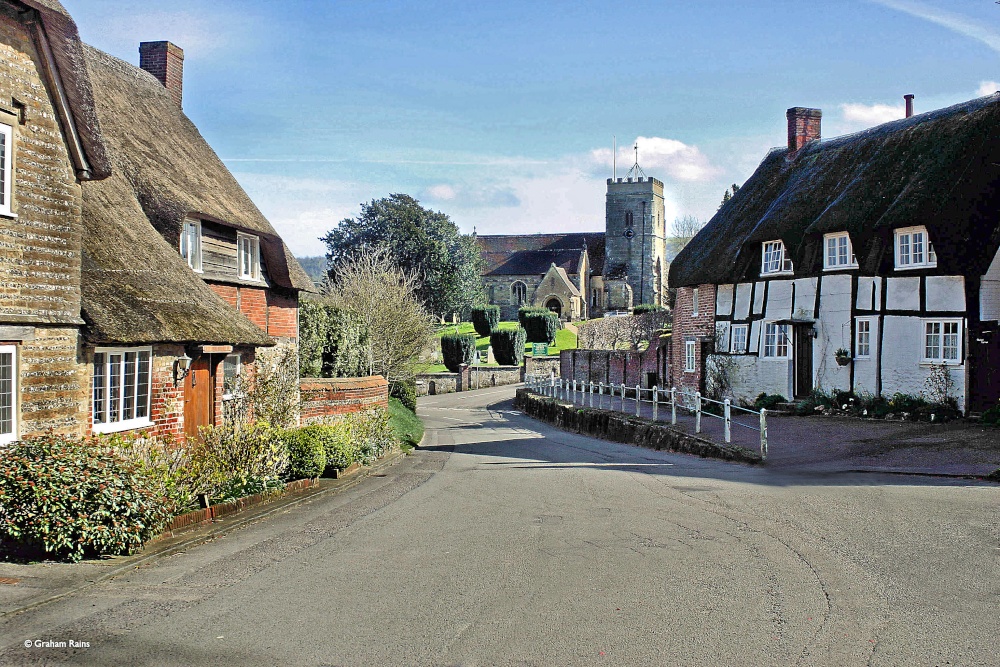
Okeford Fitzpaine in Dorset - Image by PicturesOfEngland.com member Graham Rains (view gallery)

Okeford Fitzpaine in Dorset - Image by PicturesOfEngland.com member Graham Rains (view gallery)
A pretty village set in the Blackmore Vale in the heart of North Dorset, just 3 miles south of the market town of Sturminster Newton.
Within the parish are 61 structures that are listed by Historic England for their historic or architectural interest, which includes a green painted K6 telephone box and 50 metres of raised pavement along Shillingstone lane, and a table tomb in St Andrews churchyard.
The village also boasts its very own museum exhibiting the village's own early 19th-century fire engine and the World War II air-raid siren issued to the village post office.
In 1086 in the Domesday Book Okeford Fitzpaine was recorded as Adford. It had 40 households, 16 ploughlands, 21 acres of meadow and a mill.
ID#31794

Hardy's Dorset - Image by PicturesOfEngland.com member Graham Rains (view gallery)
Evershot is a pretty village and is considered to be the heart of Thomas Hardy's Wessex, famous for its inclusion in much of his famous literature such as the novel 'Tess of the d’Urbervilles' where it is referred to as 'Evershed'.
The village, which is the second highest village in the county of Dorset, has changed little since Hardy's time, and if you are familiar with his works and wish to visit some of the places associated with Hardy and his works, then Evershot is the ideal place to visit.
ID#32220
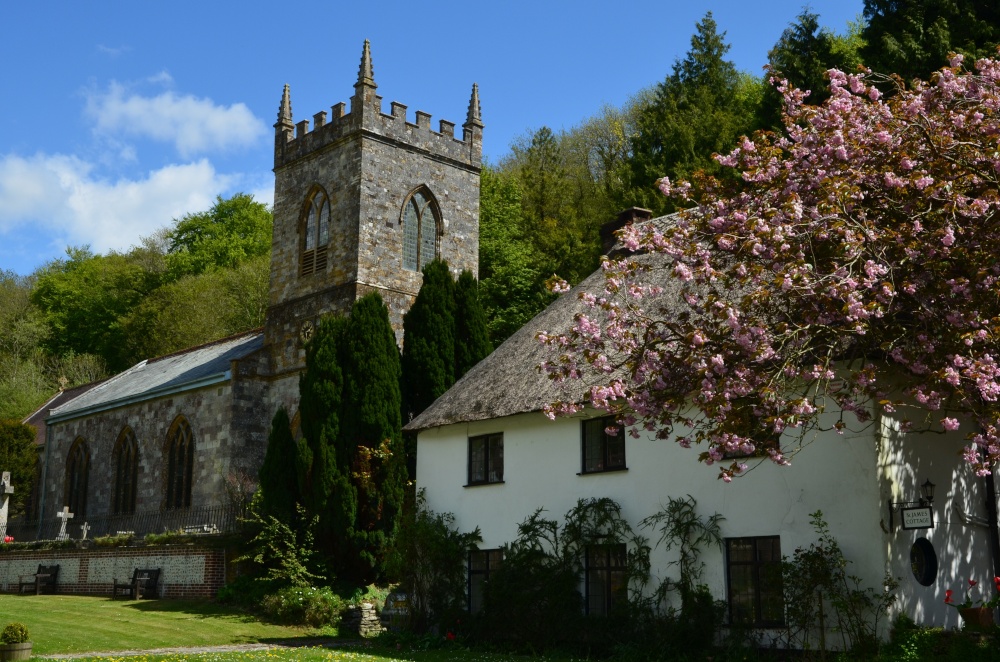
Milton Abbas - Image by PicturesOfEngland.com member Jez Taylor (view gallery)
Milton Abbas is a superb thatched village which has the distinction of being the first planned village of its kind in England. The village came into being in 1780 because Lord Milton, Earl of Dorchester, felt the old village as seen from his new mansion at Milton Abbey, ruined his view of the surrounding countryside. Thus, he pulled down the old properties and moved all the tenants into new cottages built around a nearby hill.
The village owes much of its present day charm to the imaginative foresight of the Earl's chosen architect, Sir William Chambers. The properties are spaciously set behind pleasant grassed fronts, each whitewashed cottage hides beneath a thickly thatched roof, and a chestnut tree was planted between the dwellings. Unfortunately the ravages of time took care of the chestnut trees, but the cottages, quintessentially English in appearance, remain very much as they looked in the late 18th century.
Lord Milton's mansion is now occupied by Milton Public School for Boys, and the ancient 14th century abbey church forms part of the school's group of buildings. Architect James Wyatt, who also had a hand in the building of the mansion, was responsible for building Milton Abbas Parish Church.
The countryside surrounding Milton Abbas is gloriously spacious, making it an idyllic village to tarry whilst enjoying fine views and fresh air. The nearest town is Blandford Forum, the rivers Piddle and Frome are within easy reach, and just a short drive away lies the beautiful Dorset Heritage Coast.
ID#32401
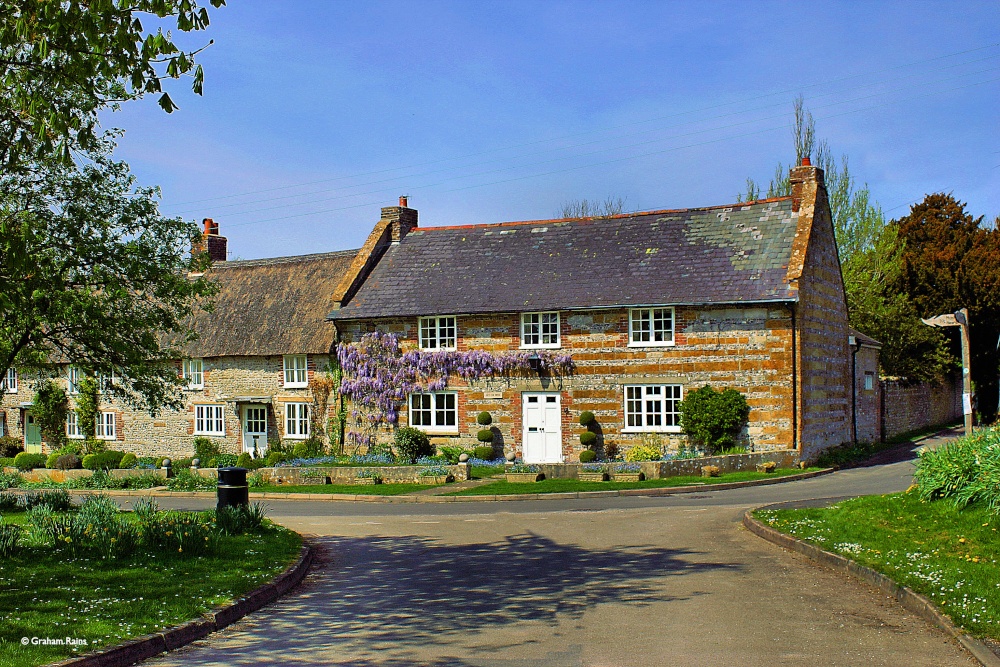
The Syling Valley, Dorset. - Image by PicturesOfEngland.com member Graham Rains (view gallery)
This is a particularly scenic village lying deep in a chalk-stream valley between open downs. Every approach to it is beautiful, whether crossing the hills from Cerne Abbas or Maiden Newton, or coming up the waters of the River Cerne between meadows flooded with spring lambs and ponies.
The village sits on the Sydling Water, it has a wealth of ancient properties, some covered with thatch, others of attractive stone or colour-washed. Many of these cottages line the banks of the trickling stream which is covered in parts with pretty connecting bridges. At the centre of the village there is a pleasant 19th-century inn, this is an excellent place to tarry after enjoying a stroll around Sydling's quiet country lanes.
St.Nicholas's Church is the focal point of the village, this was built during the 15th-century and was the subject of much rebuilding in the 18th-century. An unusual feature is the fireplace inside the porch, which prior to to-day's village hall, the church porch was often the place villagers used for church and village meetings. Church treasures include a font thought to be around 1000 years old and a clock of 1593. The church is well worth a visit, its rich interior has many monuments and its tower has gargoyles. It can be found in a peaceful churchyard setting surrounded by old graves and tombstones.
The village has a profusion of landscapes and a rich variety of wildlife, it is a contented, harmonious place with a lovely rarefied atmosphere, hard to find in today's turbulent world and once here it is difficult to believe you are just a few short miles from the bustling town of Dorchester and the lively seaside resort of Weymouth.
ID#32566
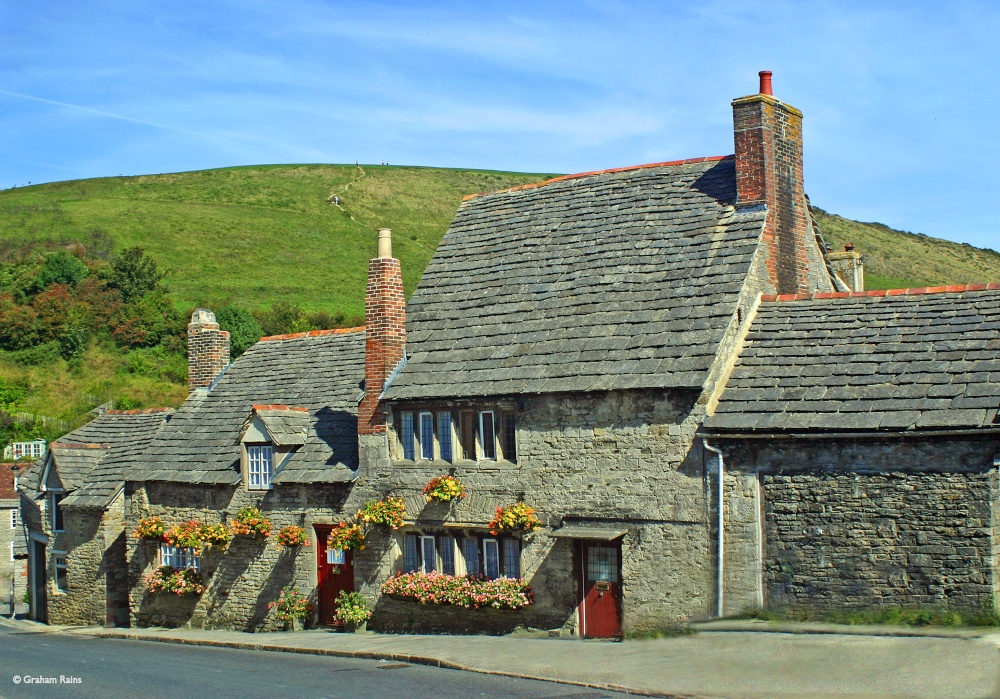
Corfe Castle in Dorset - Image by PicturesOfEngland.com member Graham Rains (view gallery)
Standing in lofty splendour above the chimney pots of the village with the roaring ocean lapping the cliffs to the other side of a rocky outcrop, the romantic ruins of medieval Corfe Castle, cast a dramatic shadow from every approach. There is evidence of habitation in the area in the days of pre-history but Corfe really came to prominence when the great castle was begun at the time of William the Conqueror.
The castle has a stirring history, and although for nearly all of the medieval period it was a Royal residence, it was tainted by dark and secretive deeds. King Edward II was imprisoned here and strangely, King John kept his crown jewels at Corfe. When the throne passed to Henry VII he gave the castle to his mother, however when Henry VIII succeeded, he claimed the castle for himself. Henry's daughter Queen Elizabeth I, sold Corfe to Sir Christopher Hatton, a favourite courtier and Chancellor. He fortified it as part of England's defences against the Spanish Armada.
Corfe Castle was eventually sold by the Hatton family, and at the time of the Civil War it was owned by the powerful Bankes family. Sir John Bankes was Lord Chief Justice to Charles I. Again mischief was afoot, Lady Bankes stood alone and in spite of holding the castle through the sieges of 1643 and 1645, she was finally brought down by the treachery of Colonel Pitman, one of her own officers.
The castle was left in ruins by the Parliamentarian forces, and although it continued in the ownership of the Bankes family it remained derelict throughout the centuries until it was gifted by the Bankes's to the National Trust in 1982.
Below the castle, the village of Corfe shows picturesque stone houses of the 17th-century. At the Corfe Castle Model Village you can see a perfect replica of the once mighty fortress. It's former splendour is vividly portrayed and like the magnificent hilltop ruin, cannot fail to impress all who see it.
ID#33266
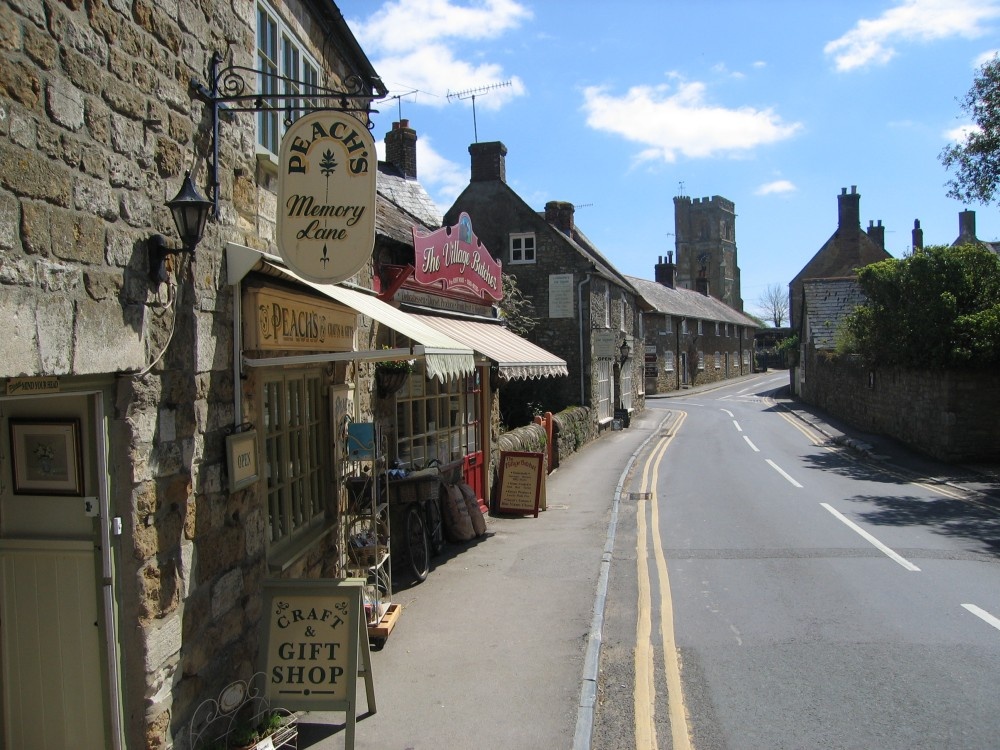
Abbotsbury, Dorset, England - Image by PicturesOfEngland.com member Chris (view gallery)
Abbotsbury is a small picturesque and historic village in the county of Dorset. Situated near the coast in one of the most unspoilt regions of England called 'The Fleet' which is an 8 mile long lagoon along the beautiful Dorset coastline. It was on the Fleet that in 1943 during the second world war Barnes Wallis tested his famous Bouncing Bomb which was used to great affect against the Nazis to destroy the dams in the famous Dam Buster raids. One of these bombs can actually be seen in the Swannery at Abbotsbury.
The Swannery is located at the edge of the Lagoon and is home to over 600 flying swans. Abbotsbury contains lots of pretty thatched roof cottages, an historic barn once part of Abbotsbury Abbey, an historic stone chapel and some lovely small shops to browse in the village.
For further information, please visit www.abbotsbury.co.uk
ID#11
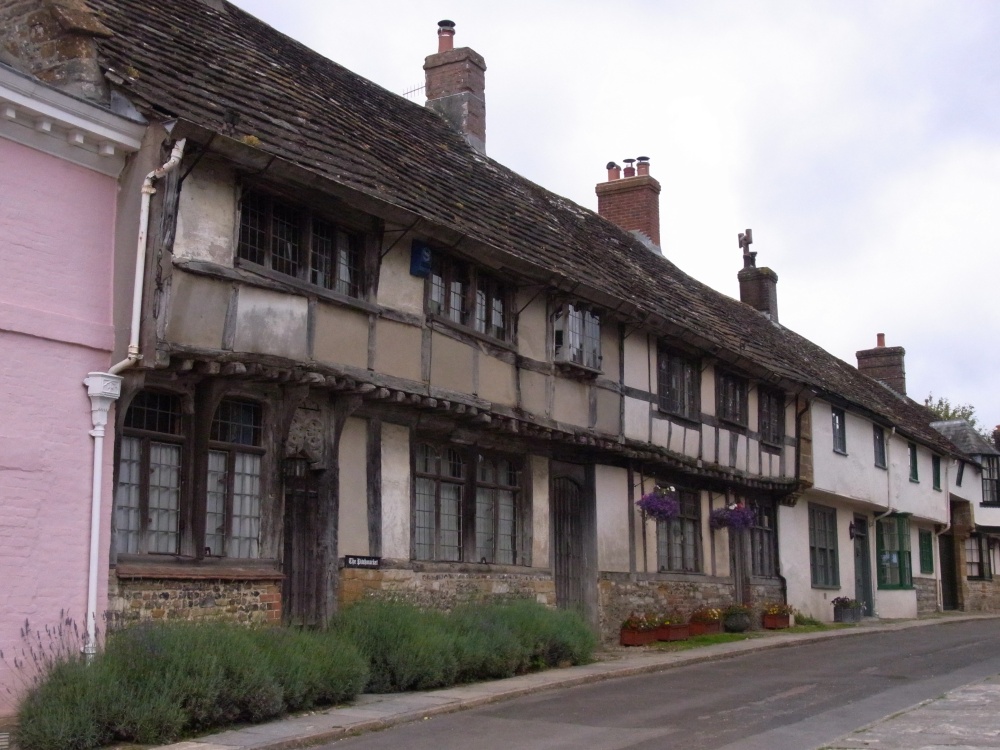
Cerne Abbas - Image by PicturesOfEngland.com member Karen Lee (view gallery)
Interestingly, it is said that the first bootees worn by Queen Victoria as a young child, came from Cerne, so too in earlier day's did boots worn by Sir Walter Raliegh and this fact indicates that at one time Cerne had an important boot and shoe making industry.
But it is not for this that this delightful area is famous, more is owed to the Benedictine Abbey around which the village grew up beneath the shadow of the the Giants Hill with it's 'huge' chalk figure of a man cut into the turf of the hill. The 180ft chalk giant is said to date back to before the arrival of the Romans.
Cerne Abbas is mentioned in the Domesday Book, the Monastry was founded much earlier on in the 10th-century. To-day, all that remains of this once great Abbey is the large Porch thought to originally be the entrance to the Abbot's dining room. The village itself is a delightful mixture of thatched, stone and colour-washed cottages of which good examples can be seen in Long Street. There are some fine black and white half timbered buildings and Abbey Farm is a handsome gabled tudor building.
Many facts and legends surround this pleasant town; it is believed that the quality of the water here produced good beer; in 1883 the village supported fourteen inns and one assumes the 'water' must have been very good indeed. Another story tells of hard hats being made here during the 19th-century that were so strong you could jump on them. Perhaps the most curious of all is the legend from the early 1800's when women slept on the giants hill at night as a cure for infertility, one supposes though, that this only occured in high summer!
Cerne Abbas is in a beautiful region of England and is but a few miles north of the town of Dorchester and a stone's throw from the superb Weymouth bay coastline. You will find much to see and do, both Dorchester and Weymoth have excellent museums, there is a beautiful garden at Kingston Maurward and a short distance from here you will find Thomas Hardy's cottage, now owned by the National Trust and open to the public. You will enjoy your time in this attractive and very English area and of the memories you take home, the abiding one will surely be of the huge giant guarding a ruinous Abbey.
ID#298
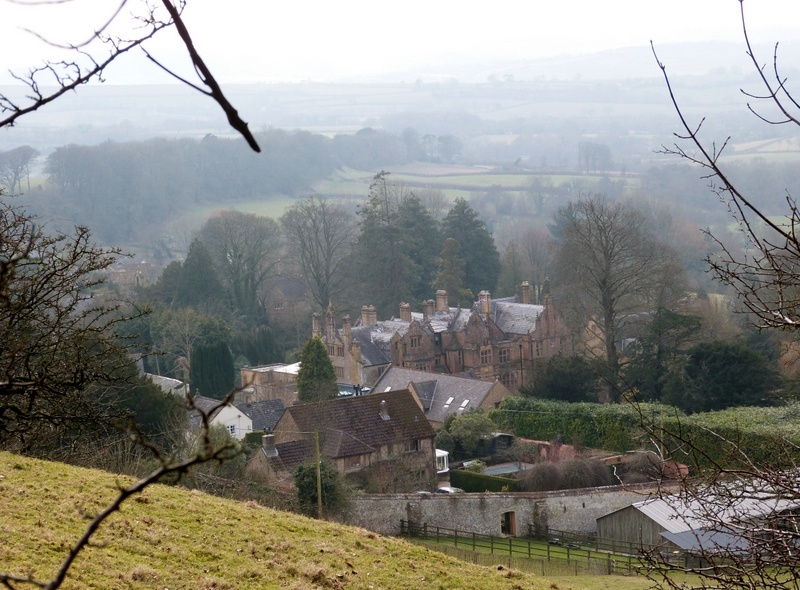
Chedington - Image by PicturesOfEngland.com member Pat Trout (view gallery)
Chedington is a small attractive estate village high up in the West Dorset hills which was originally built around Chedington Court.
The village has some of the finest views in Dorset, with Somerset's Mendip Hills and Hamdon Hills to the North East and from which much of the Ham stone was sourced that was used to build much of the village with its attractive houses and cottages.
The village is the rising point of two rivers - The river Axe, and the river Parrett, making it the starting point of the 47 mile long River Parrett Trail.
The attractive Chedington church which was built in 1841, was unfortunately made redundant in 1980 and has since been made into a private dwelling.
At the north end of the village can be found Winyard’s Gap, the famous cutting owned by the National Trust and a place which was forever immortalised by Thomas Hardy in his poem A Trampwoman's Tragedy.
It was the National Trust who donated 16 acres of land here for a memorial to the 43rd (Wessex) Division of the Dorsetshire Regiment, which was designed to be an exact replica of the memorial in Normandy which sits on Hill 112, south-west of Caen close to the D-Day beachhead. It is an impressive tribute to the sacrifice made by the men of the battle which claimed some 7000 casualties.
The Wynyard’s Gap Inn, is a popular watering hole offering traditional food and is perfect for taking in some of the stunning panaramic views on offer in this beautiful part of England.
ID#32162

Lewesdon hill - Image by PicturesOfEngland.com member Pat Trout (view gallery)
Broadwindsor is a sleepy picturesque village in the countryside of West Dorset, 2 miles west of the pretty town of Beaminster, and was once a hiding place for King Charles II as he fled Oliver Cromwell's Parliamentary troops in 1651.
Another famous connection with the village is that of the churchman and historian Thomas Fuller (1608 -1661) who was a preacher at Broadwindsor and was known to have a great sense of humour, often having his congregation roaring with laughter during his sermons, which was rare in those times.
Fuller wrote The Worthies of England and The History of the Holy Warre, and he preached at Broadwindsor between 1634 and 1650.
As for King Charles II, it was the night of 23 September 1651 when Charles was sheltering in the village after fleeing Parliamentary troops after the Battle of Worcester. He was staying at the Castle Inn when enemy troops arrived, demanded accommodation and began a search for the fugitive King. However, luckily for Charles one of the camp followers began to give birth, giving Charles an opportunity to flee, which he did disguised as a maid.
There is a plaque on one of the buildings in the village identifying it as where the King stayed.
ID#32359
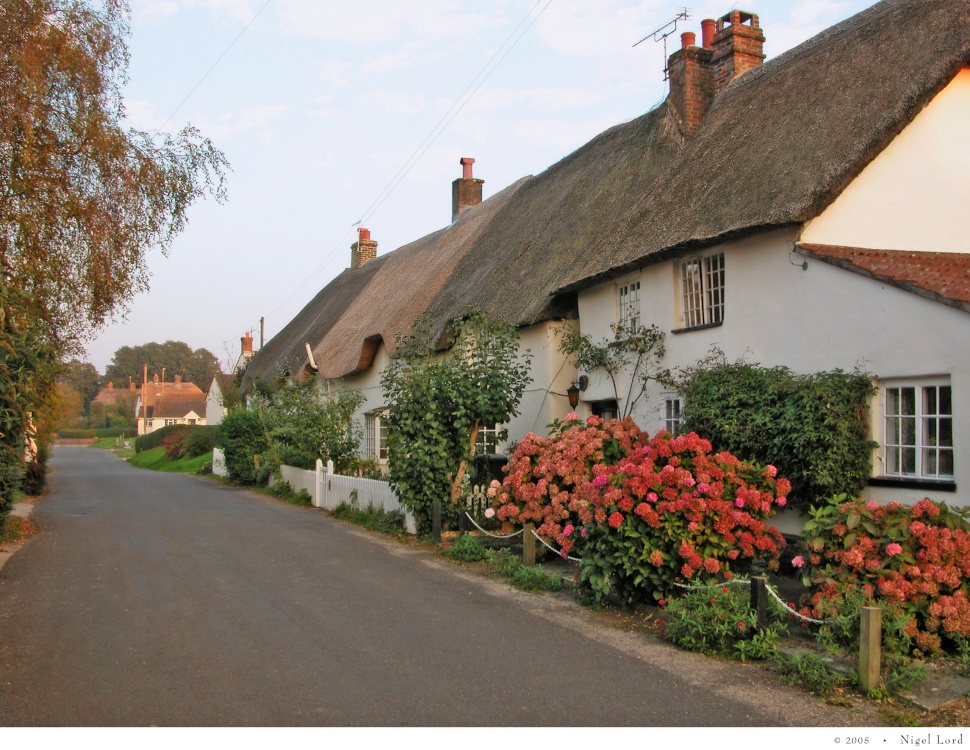
Briantspuddle village - Image by PicturesOfEngland.com member Nigel Lord (view gallery)
This remarkable village owes much to the agricultural experiment carried out by Sir Ernest Debenham during the years between the two World Wars. Sir Ernest was the head of a large London store and so he had the time and money at his disposal for his scheme which he regarded as an attempt to prove that Great Britain could be solely responsible for feeding the British nation. In an experiment far ahead of it's time Sir Ernest introduced scientific methods to intensify pig, poultry and dairy farming. His building projects were centred on the 'Arts and Crafts' style, using mostly, locally made building materials and his legacy lives on in the many houses and cottages he built in and around the village.
This quaint village differs from most English villages in that it has no church and there is very little here other than fine whitewashed cottages interspersed down narrow leafy lanes that are more used to driven herds than the modern motor vehicles of today. The village though, wears well an air of quiet charm which shows in beautifully kept gardens that border thickly thatched, mullion windowed dwelling houses of by-gone days. The most interesting and attractive properties are perhaps those known as The Ring - a group of cottages with two turrets of thatch, built by Sir Ernest Debenham in 1919, their intended use was as a dairy farm.
Just a short way away from Briantspuddle is an interesting memorial commemorating the dead of two world wars, it is by the noted artist Eric Gill and is of local Portland stone and sculpted in the form of an ancient Market cross.
Briantspuddle is close to the magnificent Dorset coast and not far from the rivers Piddle and Frome. There is a museum at Tolpuddle and Athelhampton House is close-by. The NT property of Clouds Hill is just a short distance away. This is a region of great beauty that has much to attract and interest the visitor.
ID#32855
| Article Title | Author | Date |
| Stonehenge | David Coe | 23rd January 2024 |
| Derwent Dam: A Historic Icon in the Heart of Derbyshire | David Coe | 14th January 2024 |
| The Native Trees of England: A Botanical Tapestry | David Coe | 15th December 2023 |
| Stoke-on-Trent: The Potteries Hub | David Coe | 12th December 2023 |
| England's 'Heritage at Risk Register' 2023 | David Coe | 11th December 2023 |
| 10 of the prettiest villages in the Lake District, Cumbria | poe | 16th March 2023 |
| Where to see Daffodil Displays in the South West of England | poe | 3rd March 2023 |
| 10 Famous Landmarks in Dorset | poe | 1st March 2023 |
| List of popular Dorset market towns including market day | poe | 1st March 2023 |
| 10 Best Historic Attractions to visit in York, England | poe | 16th May 2022 |